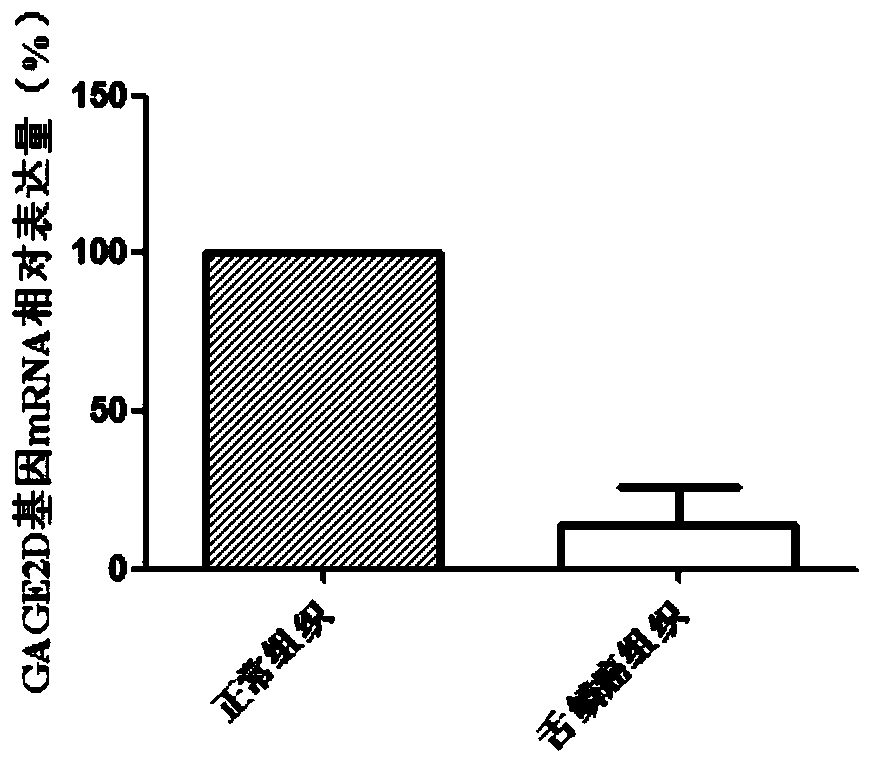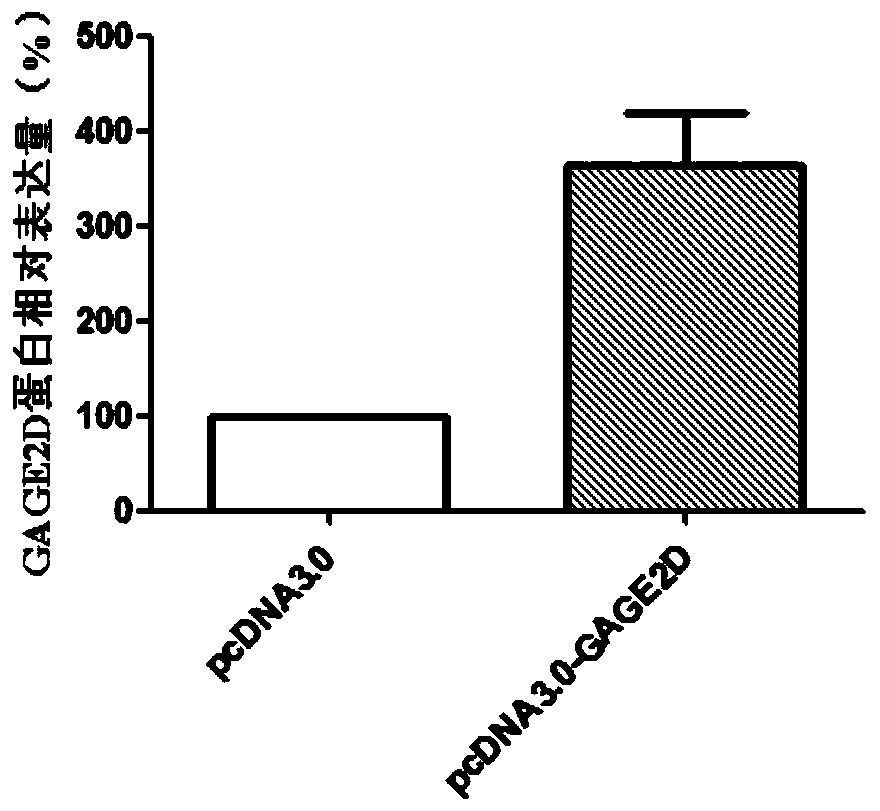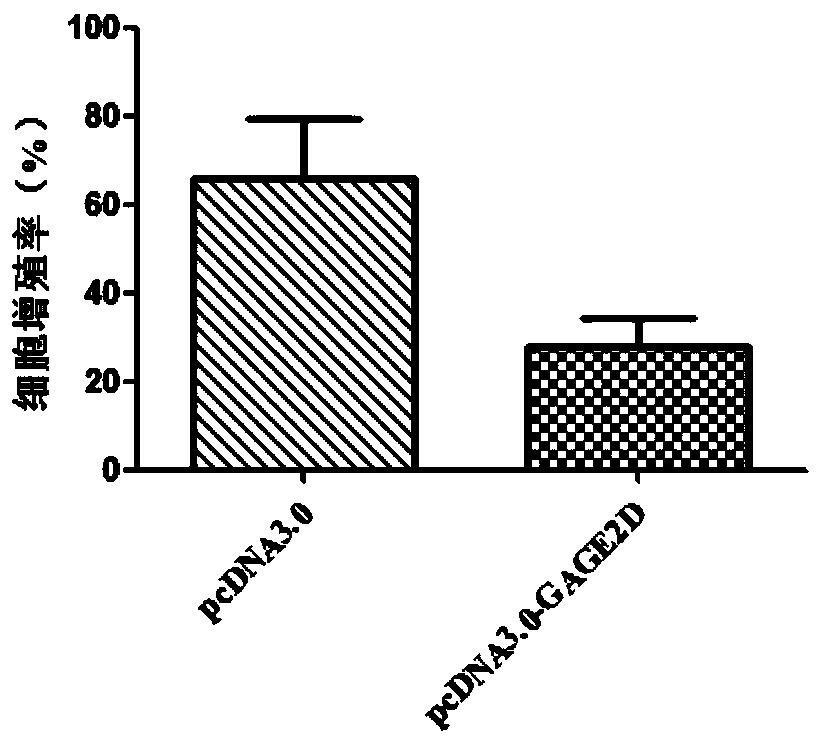Gene markers for diagnosis and treatment of tongue squamous cell carcinoma
A tongue squamous cell carcinoma, gene technology, applied in the field of tumor diagnosis and prognosis prediction, can solve the problems of large lesion area, wide surgical resection, affecting the quality of life of patients, etc.
- Summary
- Abstract
- Description
- Claims
- Application Information
AI Technical Summary
Problems solved by technology
Method used
Image
Examples
Embodiment 1
[0062] Example 1 Screening of differentially expressed genes
[0063] 1. Experimental materials
[0064] Five cases of tongue squamous cell carcinoma tissue specimens were obtained from oral and maxillofacial surgery patients, including 2 cases of well-differentiated squamous cell carcinoma, 2 cases of moderately differentiated squamous cell carcinoma, and 1 case of poorly differentiated squamous cell carcinoma; including 2 male cases and 3 female cases. At the same time, each case of cancerous tissue was selected as the normal tissue at >5cm around the cancerous tumor as its own control. All patients had not undergone chemotherapy, radiotherapy, biological therapy and other treatments for tumors before seeing the doctor. A part of the tissue was immediately stored in liquid nitrogen after collection.
[0065] 2. RNA extraction and cDNA synthesis
[0066] Total RNA was extracted with Trizol RNA reagent (Invitrogen Company), and total RNA was identified by UV spectrophotomet...
Embodiment 2
[0075] Example 2 Verification of Differentially Expressed Genes in Large Samples
[0076] Based on the results of the primary screening of the microarray, we selected the GAGE2D gene for large-scale validation.
[0077] 1. Sample collection
[0078] According to the method of Example 1, 45 tongue squamous cell carcinoma tissues and 45 normal tissues were collected.
[0079] 2. Validation at the mRNA level
[0080] 2.1 Extract tissue RNA
[0081] Step is with embodiment 1.
[0082] 2.2 Reverse transcription
[0083] Reverse transcription using Primescript 1 st strand cDNA synthesis kit kit, the operation steps are as follows:
[0084] (1) Add the following reaction liquid in the microcentrifuge tube, as shown in Table 1:
[0085] Table 1 Reaction liquid
[0086] Reagent dose RNA 2.0μg dNTP 1.0μl Oligo(dT) 2.0μl RNase free dH 2 o
Add to 10.0μl
[0087] (2) Incubate at 70°C for 5 minutes, then rapidly cool to 4°C;
[0088...
Embodiment 3
[0109] Example 3 GAGE2D gene overexpression
[0110] 1. Construction of GAGE2D gene recombinant plasmid
[0111] (1) amplifying the coding sequence of the GAGE2D gene;
[0112] (2) Design amplification primers;
[0113] (3) The amplified GAGE2D gene was connected to the expression vector pcDNA3.0 to construct the pcDNA3.0-GAGE2D recombinant expression vector.
[0114] 2. Culture and transfection of tongue squamous cell carcinoma cells
[0115] 2.1 Cell culture
[0116] Human tongue squamous carcinoma cell line HN4 was cultured in DMEM / F12 medium containing 10% FBS, 100 U / mL penicillin and 100 μg / mL streptomycin. All cells were placed in 5% CO 2 in a 37 °C cell culture incubator.
[0117] 2.2 Cell transfection
[0118] (1) 24h before transfection, the cells were inoculated with 2×10 5 Inoculate each well in a 6-well plate, add DMEM / F12 medium, adhere to the wall overnight, and perform transfection when the cells reach 80-90% confluency.
[0119] (2) Dilute 1 μg of plas...
PUM
 Login to View More
Login to View More Abstract
Description
Claims
Application Information
 Login to View More
Login to View More - R&D
- Intellectual Property
- Life Sciences
- Materials
- Tech Scout
- Unparalleled Data Quality
- Higher Quality Content
- 60% Fewer Hallucinations
Browse by: Latest US Patents, China's latest patents, Technical Efficacy Thesaurus, Application Domain, Technology Topic, Popular Technical Reports.
© 2025 PatSnap. All rights reserved.Legal|Privacy policy|Modern Slavery Act Transparency Statement|Sitemap|About US| Contact US: help@patsnap.com



